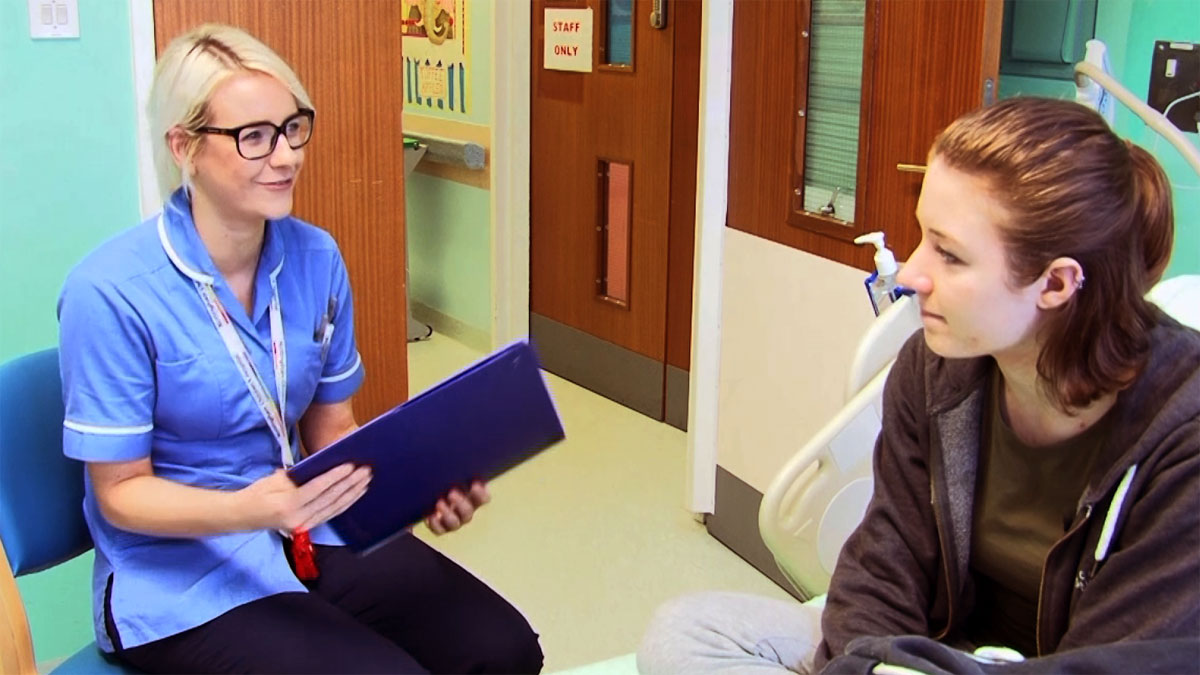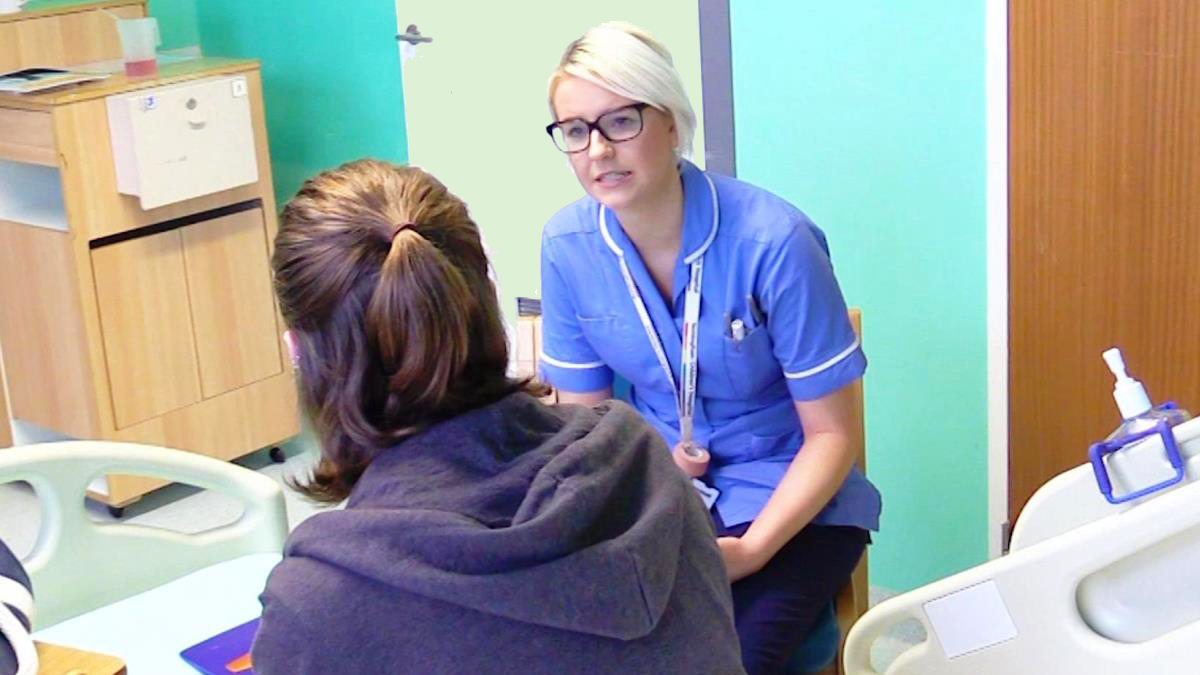Effective and ineffective communication: examples and impact
Effective communication enables the development of rapport and trust, minimises misunderstandings and allows for a therapeutic relationship to develop. However, communicating with children and young people who have self-harmed presents challenges to nurses. One of the most common challenges is nurses not knowing what to say or fear of saying something wrong.
We will initially explore what poor communication looks like and the impact this has from the child or young person’s perspective. Following this, we will explore what effective communication might look like.
After the training, take time to reflect on what you have learned and how you will put your new skills into practice. Feel free to write down changes to your practice and record this as part of your continued professional development (CPD).

1. Initiating a conversation
2. Responding to a difficult statement or question
3. Ending an interaction
